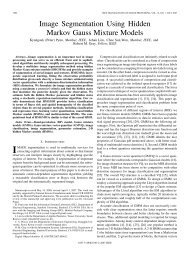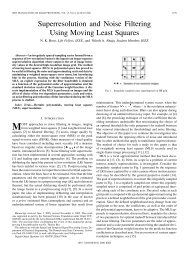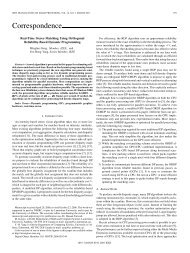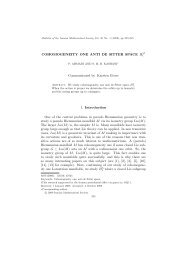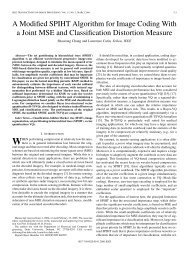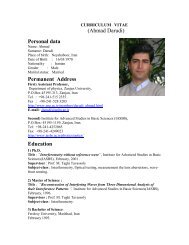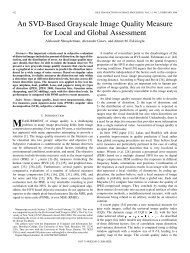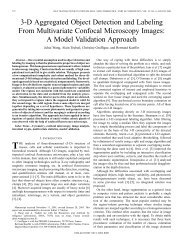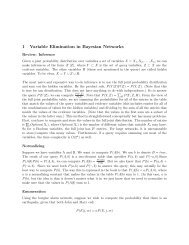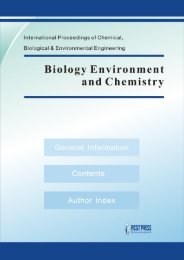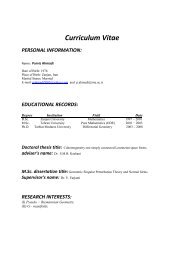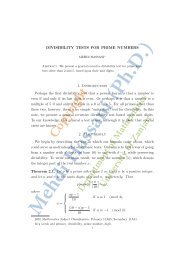Network Intrusion Detection Using Tree Augmented Naive-Bayes
Network Intrusion Detection Using Tree Augmented Naive-Bayes
Network Intrusion Detection Using Tree Augmented Naive-Bayes
You also want an ePaper? Increase the reach of your titles
YUMPU automatically turns print PDFs into web optimized ePapers that Google loves.
CICIS’12, IASBS, Zanjan, Iran, May 29-31, 2012<br />
human experts are necessary to define relevant attribute<br />
for defining the normal behavior. This leads<br />
us to the adaptability problem. [10]<br />
3.2 Different Types of Attacks<br />
Attacks are grouped into four classes:<br />
• Denial of Service (DOS): Making some machine<br />
resources unavailable or too busy to answer<br />
to legitimate users requests.<br />
• User to Root (U2R): Exploiting vulnerability<br />
on a system to obtain a root access.<br />
• Remote To Local (R2L): <strong>Using</strong> vulnerability<br />
in order to obtain a local access like a machine<br />
user.<br />
• Probing: Collecting useful information or<br />
known vulnerabilities about a network or a system.<br />
[8]<br />
4 <strong>Network</strong> <strong>Intrusion</strong> <strong>Detection</strong><br />
<strong>Using</strong> <strong>Bayes</strong>ian <strong>Network</strong>s<br />
In the following we will first discuss the <strong>Naive</strong>-<strong>Bayes</strong><br />
and then explore our contribution which is <strong>Tree</strong> <strong>Augmented</strong><br />
<strong>Naive</strong>-<strong>Bayes</strong> in intrusion detection.<br />
4.1 <strong>Naive</strong>-<strong>Bayes</strong><br />
The purpose is to find the probability that a computer<br />
or local network attack is going on.The result of the<br />
propagation of changed probabilities of certain events<br />
observed by <strong>Bayes</strong>ian network can be an automatic activation<br />
of some mechanism for attack prevention such<br />
as: breaking TCP connections, traffic redirection or<br />
disabling user activity. If the probability of an attack<br />
is significantly increased but not enough to be considered<br />
as an attack, the network will generate a report<br />
about the event and warn the system administrator.<br />
Once the network is quantified, it is able to classify<br />
any new object giving its attributes value using the<br />
<strong>Bayes</strong> rule expressed by:<br />
P (C i |A) = P (A|C i)P (C i )<br />
P (A)<br />
(1)<br />
Where c i is a possible value in the session class and<br />
A is the total evidence on attributes nodes. The evidence<br />
A can be dispatched in the pieces of evidence,<br />
say a 1 , a 2 , ..., a n relative to the attributes A 1 , A 2 , ..., A n<br />
, respectively. Since naive <strong>Bayes</strong>ian networks work under<br />
the assumption that these attributes are independent<br />
(giving the parent node C), their combined probability<br />
is obtained as follows:<br />
P (C i |A) = P (a 1|C i )P (a 2 |C i )...P (a n |C i )P (C i )<br />
P (A)<br />
(2)<br />
Note that there is no need to explicitly compute<br />
the denominator P(A) since it is determined by<br />
the normalization condition. Therefore, it is sufficient<br />
to compute for each class c i its likelihood,<br />
i.e. P (a 1 |C i )P (a 2 |C i )...P (a n |C i )P (C i ) to classify any<br />
new object characterized by its attributes values<br />
a 1 , a 2 , ..., a n . [9]<br />
4.2 <strong>Tree</strong> <strong>Augmented</strong> <strong>Naive</strong>-<strong>Bayes</strong><br />
<strong>Bayes</strong>ian network structure learning without any structural<br />
restrictions is known to be a difficult problem.<br />
Several possibilities of adding arcs between classifier<br />
features have been proposed. TAN models are wellknown<br />
extensions of naive <strong>Bayes</strong>. The main rule of<br />
TAN classification is given by:<br />
P (C|A) = αP (C)P (A 1 |P A 1 , C)...P (A n |P A n , C) (3)<br />
A is the global information provided by features values.<br />
P A i is the parent feature of A i (on which A i<br />
depends). The optimal tree can be obtained simply by<br />
calculating mutual information measures between each<br />
two variables on the basis of training instances. [10]<br />
Figure 4: IDS with <strong>Bayes</strong>ian <strong>Network</strong>



